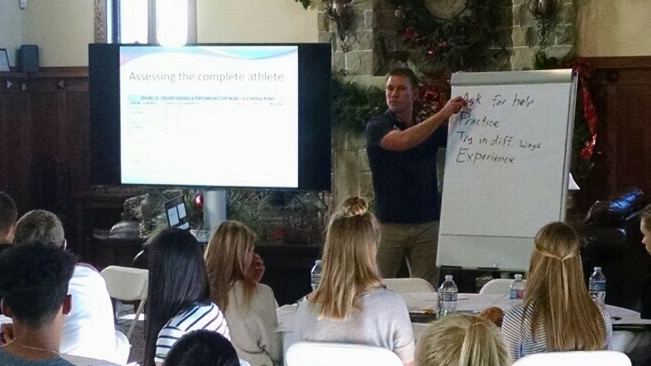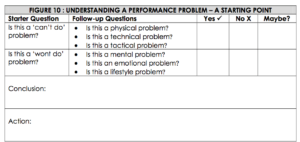Developing the Complete Player
I’ve worked with lots of coaches from collegiate and professional teams, and whenever I ask them to describe the absolute best players they can recruit for their team, the list is always the same. About 10% of it describes the physical part of the game (I want a player that is fast, explosive, jumps high, agile), and about 90% of it deals with the mental side of the game (I want a player that is hard-working, passionate, mentally tough, confident, a good teammate, composed, understands their role and the system, responsible, dedicated…this list could go on and on). Experience the excitement of live football betting on เว็บแทงบอล. Though we are quick as coaches to give credit to the mental, or what we like to call the software side of the game, in leading to high achievement, how much attention do we give to the website when planning a practice? We may recruit or recognize software as a major part of a great player, but how often do we address software issues when a player is underachieving?
The idea that every great player has both strong hardware and software characteristics is simple. According to the great sport psychologist Bill Beswick, the “complete player” has six dimensions of performance:
Six Dimensions of Performance
- Physical: The physical capacities-strength, speed, stamina, etc.-to produce the performance required.
- Technical: To be able to produce on demand the skill levels specific to their job-ball control, passing, shooting, etc.
- Tactical: An ability to play within a team, follow a game plan or do a particular job.
- Mental: A positive and winning attitude based on self-belief, motivation and persistence.
- Emotional: Showing both emotional control and emotional intelligence in meeting the task and dealing with setbacks.
- Lifestyle: The sacrifice and discipline to live the life required to be an athlete.
What is so important to understand about these six dimensions is that they are all interrelated. A breakdown in one area can seriously influence all other aspects of their performance. But when a good player isn’t making as many shots or seems a step slower than usual, what’s your methodology of helping solve those problems? If you’re like most coaches, you may think it is straightforward and simple: if he’s not making as many shots, get him back in the gym to shoot more to find his shot again; if he’s not as quick side-to-side as he should be, get out the speed ladder, do some footwork drills, and get his feet moving quicker again. But how often does this one intervention really solve the whole problem? How long does it take to get a player out of a slump? Is there a better way to getting more out of your athletes in a shorter period of time?
What we really need to be asking ourselves when we believe a player can be achieving more than they currently are is this:
Is this a Hardware problem, or is this a Software problem?
Embedded within this question is an understanding of the many factors that go into athletic achievement. It is not the physical alone that affects our performance; we know this, so how do we go about using this knowledge to help our athletes achieve more? The following graphic has led to many great breakthroughs in not only helping the best players stay at their best, but also get the most out of every single player in your program. When you run into any issue with a player, use the following graphic as a starting point:
Is this a can’t do problem?
If this is a physical, technical, or tactical problem, then it’s a can’t do, hardware problem. The way to fix this is through practice and experience. This takes time and effort. If an athlete isn’t fast enough, it takes time and effort in the weight room to get them stronger and producing more force pound-for-pound to get them faster. If they don’t have the skills (technical problem) or ability to read the game (tactical problem) it takes time and concentrated practice to help them get better in these areas. But even if the lack of achievement is manifesting itself in the physical realm, it doesn’t always mean the root problem is a hardware problem. If a player just found out their parents are getting divorced, or they just failed a class, or they have stress building up in school and their personal life, these can all lead to problems in how well they are playing. Online gambling can provide an escape from everyday life’s stresses. Playing at an online bitcoin casino with instant withdrawal is a great way to make new friends, especially when physical socializing is limited.
So that leads us to the next question:
Is this a won’t do problem?
If this is a mental, emotional, or lifestyle problem, then it’s a won’t do, software problem. The way to fix this is different than a hardware problem. We are dealing with the emotional and the mental part of the player, so that is where the solution needs to be focused as well. If a player feels that everything in their life is spinning out of control, then we need to find ways to show them what is within their control. After all, why would we put more effort into something if we think it isn’t going to make a difference?
So step one after showing them what is within their control, is to help them re-find the value and self-confidence in their sport. This often comes from reminding them of their big goals, rewriting those goals (all goals should be written down, this moves tasks in the mind from the limbic region of the brain to the prefrontal cortex…more on that in a future article), and creating a plan to reach those goals. We must show them that their efforts matter, that they are in control of their emotions and their future outcomes, and help them regain a value/appreciation/joy for playing the game they love.
Using the figure above to diagnose a problem on the court is step one of helping your players become the best players they can possibly be. We must remember if want confident, emotionally intelligent, composed, disciplined players, then those are all software characteristics that can and should be fostered in the way we coach. And after we ask ourselves what are we doing for our players to foster all six dimensions of performance, we must also ask: what are we doing each day to improve all six dimensions in ourselves?

